Rigved
The Rigveda or Rig Veda is an ancient Indian collection of Vedic Sanskrit hymns. It is one of the four sacred canonical texts of Hinduism known as the Vedas. The Rigveda is the oldest known Vedic Sanskrit text. Its early layers are one of the oldest extant texts in any Indo-European language.The sounds and texts of the Rigveda have been orally transmitted since the 2nd millennium BCE. The philological and linguistic evidence indicates that the bulk of the Rigveda Samhita was composed in the northwestern region of the Indian subcontinent, most likely between c. 1500 and 1000 BCE,although a wider approximation of c. 1900–1200 BCE has also been given.
The text is layered consisting of the Samhita, Brahmanas, Aranyakas and Upanishads. The Rigveda Samhita is the core text, and is a collection of 10 books with 1,028 hymns in about 10,600 verses . In the eight books – Books 2 through 9 – that were composed the earliest, the hymns predominantly discuss cosmology and praise deities. The more recent books in part also deal with philosophical or speculative questions, virtues such as dāna in society, questions about the origin of the universe and the nature of the divine, and other metaphysical issues in their hymns. The Rigveda's core is accepted to date to the late Bronze Age, making it one of the few examples with an unbroken tradition. Its composition is usually dated to roughly between c. 1500–1000 BCE. According to Michael Witzel, the codification of the Rigveda took place at the end of the Rigvedic period between ca. 1200 and 1000 BCE, in the early Kuru kingdom. Asko Parpola argues that the Rigveda was systematized around 1000 BCE, at the time of the Kuru kingdom.
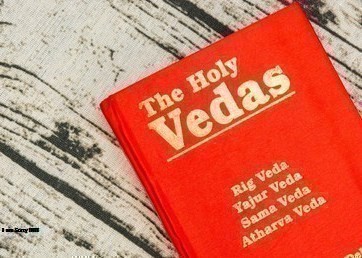
The various Rigveda manuscripts discovered so far show some differences. Broadly, the most studied Śākala recension has 1017 hymns, includes an appendix of eleven valakhīlya hymns which are often counted with the eighth mandala, for a total of 1028 metrical hymns. The Bāṣakala version of Rigveda includes eight of these vālakhilya hymns among its regular hymns, making a total of 1025 hymns in the main text for this śākhā. The Bāṣakala text also has an appendix of 98 hymns, called the Khilani, bringing the total to 1,123 hymns. The manuscripts of Śākala recension of the Rigveda have about 10,600 verses, organized into ten Books. Books 2 through 7 are internally homogeneous in style, while Books 1, 8 and 10 are compilation of verses of internally different styles suggesting that these books are likely a collection of compositions by many authors.
The first mandala is the largest, with 191 hymns and 2006 verses, and it was added to the text after Books 2 through 9. The last, or the 10th Book, also has 191 hymns but 1754 verses, making it the second largest. The language analytics suggest the 10th Book, chronologically, was composed and added last. The content of the 10th Book also suggest that the authors knew and relied on the contents of the first nine books.The Rigveda is the largest of the four Vedas, and many of its verses appear in the other Vedas. Almost all of the 1875 verses found in Samaveda are taken from different parts of the Rigveda, either once or as repetition, and rewritten in a chant song form. Books 8 and 9 of the Rigveda are by far the largest source of verses for Sama Veda. Book 10 contributes the largest number of the 1350 verses of Rigveda found in Atharvaveda, or about one fifth of the 5987 verses in the Atharvaveda text. A bulk of 1875 ritual-focussed verses of Yajurveda, in its numerous versions, also borrow and build upon the foundation of verses in Rigveda.
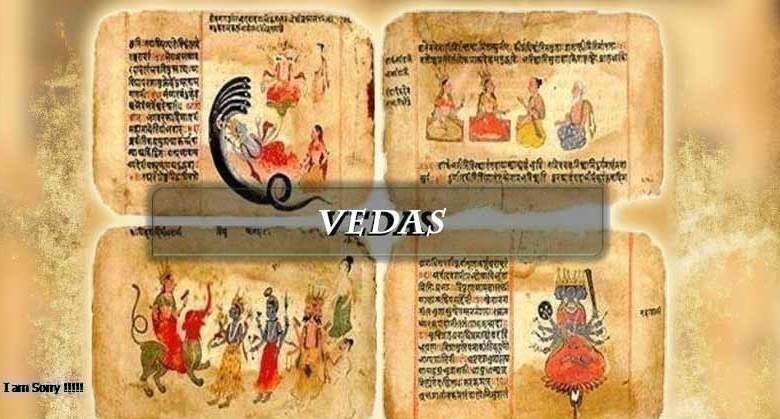
Brahmanas that were handed down in the schools of the Bahvṛcas , as the followers of the Rigveda are called, two have come down to us, namely those of the Aitareyins and the Kaushitakins. The Aitareya-brahmana and the Kaushitaki brahmana evidently have for their groundwork the same stock of traditional exegetic matter. They differ, however, considerably as regards both the arrangement of this matter and their stylistic handling of it, with the exception of the numerous legends common to both, in which the discrepancy is comparatively slight. There is also a certain amount of material peculiar to each of them.
The Kaushitaka is, upon the whole, far more concise in its style and more systematic in its arrangement features which would lead one to infer that it is probably the more modern work of the two. It consists of 30 chapters while the Aitareya has 40, divided into eight books , of five chapters each. The last 10 adhyayas of the latter work are, however, clearly a later addition though they must have already formed part of it at the time of Pāṇini, if, as seems probable, one of his grammatical sutras, regulating the formation of the names of Brahmanas, consisting of 30 and 40 adhyayas, refers to these two works. In this last portion occurs the well-known legend of Shunahshepa, whom his father Ajigarta sells and offers to slay, the recital of which formed part of the inauguration of kings.
While the Aitareya deals almost exclusively with the Soma sacrifice, the Kaushitaka, in its first six chapters, treats of the several kinds of haviryajna, or offerings of rice, milk, ghee, etc., whereupon follows the Soma sacrifice in this way, that chapters 7–10 contain the practical ceremonial and 11–30 the recitations of the hotar. Sayana, in the introduction to his commentary on the work, ascribes the Aitareya to the sage Mahidasa Aitareya, also mentioned elsewhere as a philosopher; and it seems likely enough that this person arranged the Brahmana and founded the school of the Aitareyins. Regarding the authorship of the sister work we have no information, except that the opinion of the sage Kaushitaki is frequently referred to in it as authoritative, and generally in opposition to the Paingya—the Brahmana, it would seem, of a rival school, the Paingins. Probably, therefore, it is just what one of the manuscripts calls it—the Brahmana of Sankhayana in accordance with the views of Kaushitaki.
Samved
The Samaveda, is the Veda of melodies and chants. It is an ancient Vedic Sanskrit text, and part of the scriptures of Hinduism. One of the four Vedas, it is a liturgical text which consists of 1,549 verses. All but 75 verses have been taken from the Rigveda. Three recensions of the Samaveda have survived, and variant manuscripts of the Veda have been found in various parts of India.While its earliest parts are believed to date from as early as the Rigvedic period, the existing compilation dates from the post-Rigvedic Mantra period of Vedic Sanskrit, between c. 1200 and 1000 BCE or "slightly rather later," roughly contemporary with the Atharvaveda and the Yajurveda.Embedded inside the Samaveda is the widely studied Chandogya Upanishad and Kena Upanishad, considered as primary Upanishads and as influential on the six schools of Hindu philosophy, particularly the Vedanta school. The Samaveda set important foundations for the subsequent Indian music.
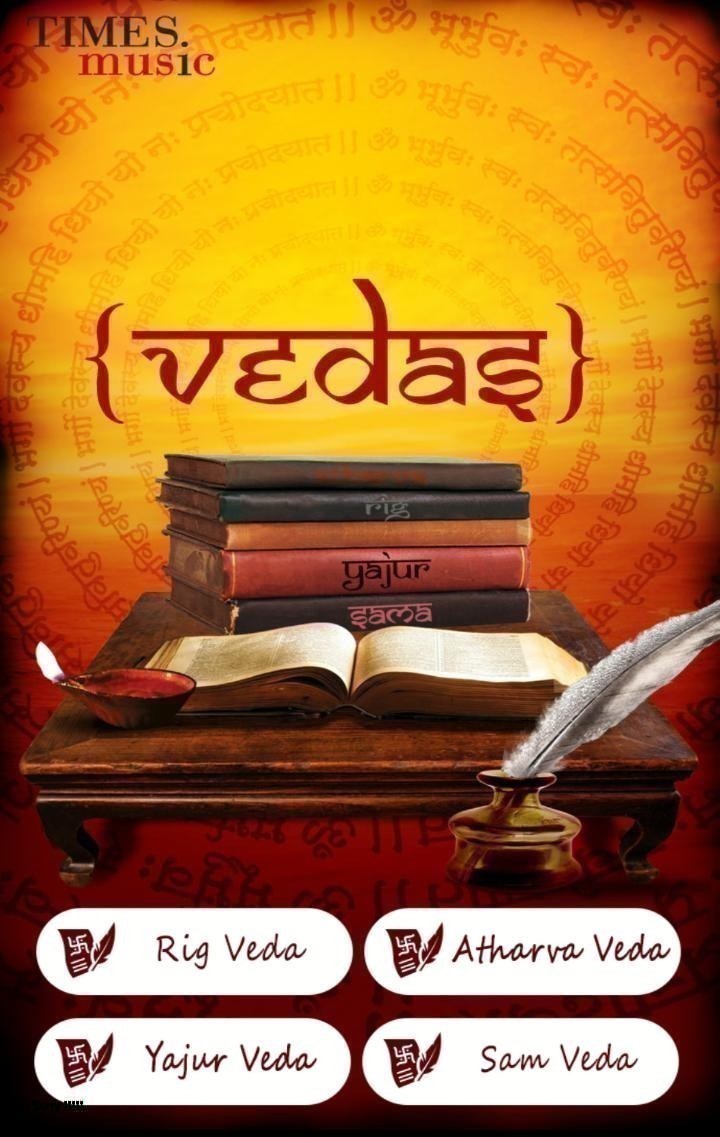
The Samaveda comprises two major parts. The first part include four melody collections and the second part three verse "books". A melody in the song books corresponds to a verse in the arcika books. The Gana collection is subdivided into Gramageya and Aranyageya, while the Arcika portion is subdivided into Purvarcika and Uttararcika portions. The Purvarcika portion of the text has 585 single stanza verses and is organized in order of deities, while Uttararcika text is ordered by rituals. The Gramageya melodies are those for public recitations, while Aranyageya melodies are for personal meditative use such as in the solitude of a forest. Typically, the Purvarcika collection were sung to melodies described in the Gramageya-Gānas index, and the rules of how the verses mapped to verses is described in the Sanskrit texts such as the Puspasutra.
Just like Rigveda, the early sections of Samaveda typically begin with Agni and Indra hymns but shift to abstract speculations and philosophy, and their meters too shifts in a descending order. The later sections of the Samaveda, states Witzel, have least deviation from substance of hymns they derive from Rigveda into songs. The purpose of Samaveda was liturgical, and they were the repertoire of the udgātṛ or "singer" priests.
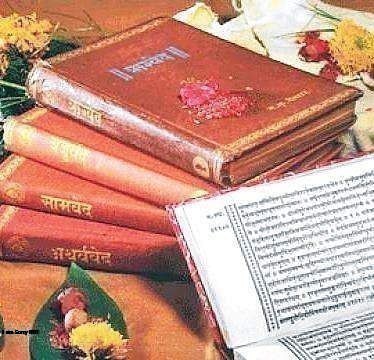
Two primary Upanishads of Hinduism are embedded inside the Samaveda – the Chandogya Upanishad and the Kena Upanishad. Both are notable for the lifting metric melodic structure, but it is Chandogya which has played a historic role in the evolution of various schools of Hindu philosophy. The embedded philosophical premises in Chandogya Upanishad have, for example, served as foundation for Vedanta school of Hinduism. It is one of the most cited texts in later Bhasyas by scholars from the diverse schools of Hinduism. Adi Shankara, for example, cited Chandogya Upanishad 810 times in his Vedanta Sutra Bhasya, more than any other ancient text.
Staal states that the melodies likely existed before the verses in ancient India, and the words of the Rigveda verses were mapped into those pre-existing melodies, because some early words fit and flow, while later words do not quite fit the melody in the same verse. The text uses creative structures, called Stobha, to help embellish, transform or play with the words so that they better fit into a desired musical harmony. Some verses add in meaningless sounds of a lullaby, for probably the same reason, remarks Staal. Thus the contents of the Samaveda represent a tradition and a creative synthesis of music, sounds, meaning and spirituality, the text was not entirely a sudden inspiration.
Atharva Ved
The Atharva Veda is the "knowledge storehouse of atharvāṇas, the procedures for everyday life". The text is the fourth Veda, but has been a late addition to the Vedic scriptures of Hinduism. Two different recensions of the text – the Paippalāda and the Śaunakīya – have survived into modern times. Reliable manuscripts of the Paippalada edition were believed to have been lost, but a well-preserved version was discovered among a collection of palm leaf manuscripts in Odisha in 1957.The Atharvaveda is sometimes called the "Veda of magical formulas", a description considered incorrect by other scholars. In contrast to the 'hieratic religion' of the other three Vedas, the Atharvaveda is said to represent a 'popular religion', incorporating not only formulas for magic, but also the daily rituals for initiation into learning, marriage and funerals. Royal rituals and the duties of the court priests are also included in the Atharvaveda.The Atharvaveda was likely compiled as a Veda contemporaneously with Samaveda and Yajurveda, or about 1200 BCE – 1000 BCE. Along with the Samhita layer of text, the Atharvaveda includes a Brahmana text, and a final layer of the text that covers philosophical speculations. The latter layer of Atharvaveda text includes three primary Upanishads, influential to various schools of Hindu philosophy. These include the Mundaka Upanishad, the Mandukya Upanishad and the Prashna Upanishad.
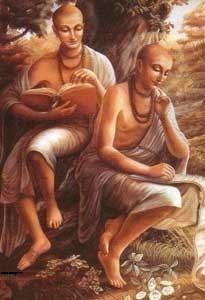
The Atharvaveda, like other Vedic texts, states William Norman Brown, goes beyond the duality of heaven and hell, and speculates on the idea of Skambha or Brahman as the all pervasive monism. Good and evil, Sat and Asat (truth and untruth) are conceptualized differently in these hymns of Atharvaveda, and the Vedic thought, wherein these are not dualistic explanation of nature of creation, universe or man, rather the text transcends these and the duality therein. Order is established out of chaos, truth is established out of untruth, by a process and universal principles that transcend good and evil.The Atharva Veda is the fourth Veda, one of the Hindu scriptures. There are a number of upanishads in this veda. Ganapathy, Narayana, Devi, Atharva Siropanishaths are part of atharv veda. Bhavanopanisath is also in atharva veda. Sankaracharya established joshimath in kedarnath one of the four popal centres of Hinduism to flourish atharva veda.
The ancient Indian tradition initially recognized only three Vedas. The Rigveda, the verse of Taittiriya Brahmana, the verse of Aitareya Brahmana and other Vedic era texts mention only three Vedas. The acceptance of the Atharvanas hymns and traditional folk practices was slow, and it was accepted as another Veda much later than the first three, by both orthodox and heterodox traditions of Indian philosophies. The early Buddhist Nikaya texts, for example, do not recognize Atharvaveda as the fourth Veda, and make references to only three Vedas. Olson states that the ultimate acceptance of Atharvaveda as the fourth Veda probably came in the 2nd half of the 1st millennium BCE.However, notes Max Muller, the hymns of Atharvaveda existed by the time Chandogya Upanishad was completed, but were then referred to as "hymns of Atharvangirasah".

The core text of the Atharvaveda falls within the classical Mantra period of Vedic Sanskrit, during the 2nd millennium BC - younger than the Rigveda, and roughly contemporary with the Yajurveda mantras, the Rigvedic Khilani, and the Sāmaveda. There is no absolute dating of any Vedic text including the Atharvaveda. The dating for Atharvaveda is derived from the new metals and items mentioned therein; it, for example, mentions iron, and such mentions have led Michael Witzel to the estimate that the Atharvaveda hymns were compiled in the early Indian Iron Age, at, or slightly after, corresponding to the early Kuru Kingdom. The priests who practised the Atharvaveda were considered to be the lowest tier of Brahmins, in comparison to the priests who practised the Rigveda, Samaveda, or Yajurveda. The stigma against Atharvaveda priests has continued in Odisha well into the modern day.
Yajurved
The Yajurveda is broadly grouped into two – the "black" or "dark" Yajurveda and the "white" or "bright" Yajurveda. The term "black" implies "the un-arranged, unclear, motley collection" of verses in Yajurveda, in contrast to the "white" which implies the "well arranged, clear" Yajurveda. The black Yajurveda has survived in four recensions, while two recensions of white Yajurveda have survived into the modern times. Yajurveda is a compound Sanskrit word, composed of yajus and veda. Monier-Williams translates yajus as "religious reverence, veneration, worship, sacrifice, a sacrificial prayer, formula, particularly mantras uttered in a peculiar manner at a sacrifice". Veda means "knowledge". Johnson states yajus means "(mostly) prose formulae or mantras, contained in the Yajur Veda, which are muttered".
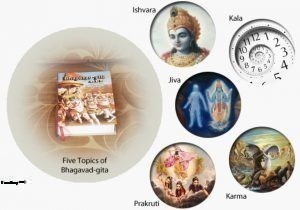
Michael Witzel interprets Yajurveda to mean a "knowledge text of prose mantras" used in Vedic rituals. Ralph Griffith interprets the name to mean "knowledge of sacrifice or sacrificial texts and formulas". Carl Olson states that Yajurveda is a text of "mantras that are repeated and used in rituals".The Yajur Veda is an ancient collection of Sanskrit mantras and verses, used in Hindu worship and rituals. It is one of the four primary scriptures of Hinduism known collectively as the Vedas, alongside Rig Veda, Atharva Veda and Sama Veda. The name is derived from the Sanskrit roots, yajus, meaning "worship" or "sacrifice"’ and veda, meaning "knowledge." Yajur Veda is sometimes translated as "Knowledge of the Sacrifice."
The text describes the way in which religious rituals and sacred ceremonies should be performed, and it is therefore primarily intended for Hindu priests.The mantras within Yajur Veda are used during religious rituals such as those before the yajna fire, and they are most commonly recited by the adhvaryu who preside over the physical details of a sacrifice.Yajur Veda is the third of the four Vedas, believed to have been composed between 1200 and 900 BCE. At the heart of the Vedic tradition is a system of sacrifices, each of which depends upon invocations of specific deities.
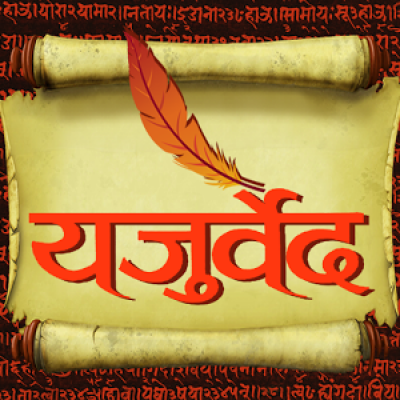
The Yajur Veda prescribes these rituals, which are performed alongside the melodic chants of the Sama Veda. Each of the four Vedas is assigned a specific Hindu priest; hota for Rig Veda, adhvaryu for Yajur Veda, udgata for Sama Veda and brahman for Atharva Veda. Although each priest plays an essential role in the religious rituals, the adhvaryu functions as executive priest, reciting from the Yajur Veda to assign sacrificial duties to the yajamana (ritual patron) and other priests.The Yajur Veda is divided into two parts - the white or "pure" Yajur Veda known as Shukla, and the black or "dark" Yajur Veda known as Krishna. The white Yajur Veda deals with prayers and specific instructions for devotional sacrifices, whereas the black Yajur Veda deals with sacrificial rituals.The Vedas were originally transmitted by word of mouth, before being edited by various schools known as shakhas. Of all four Vedas, the Yajur Veda gathered the largest amount of schools, further dividing the Shukla and Krishna Yajur Vedas into the following samhitas.